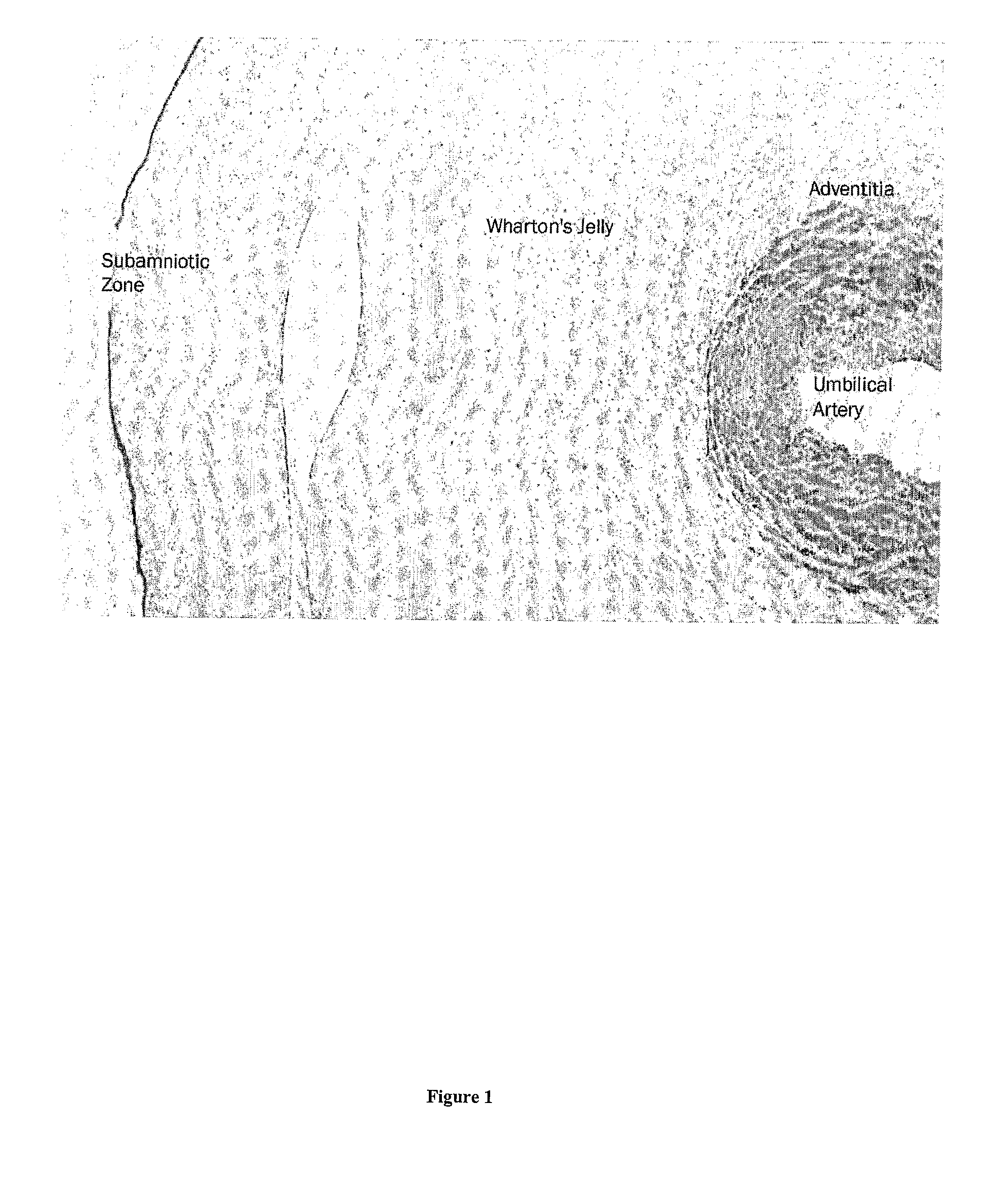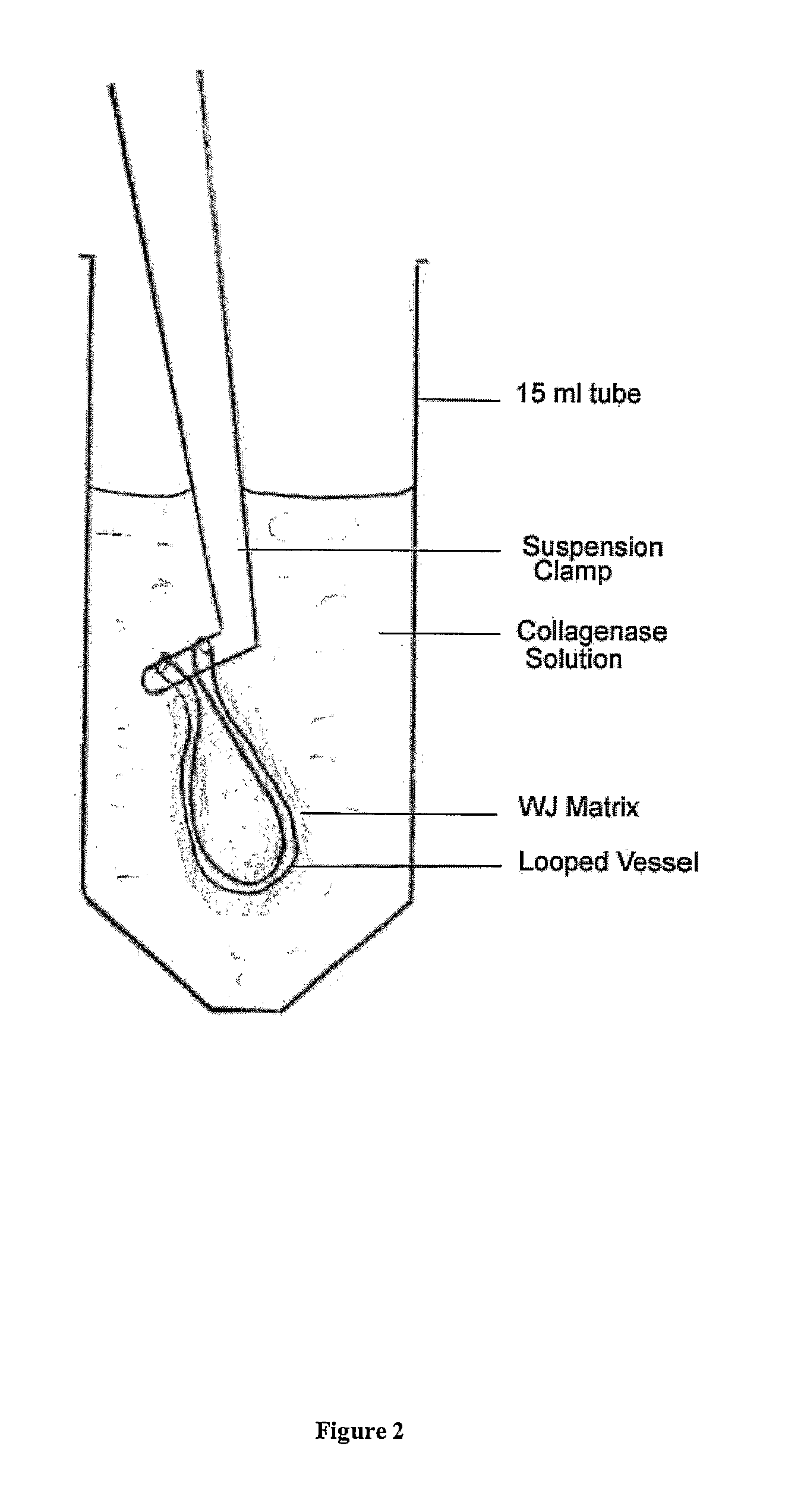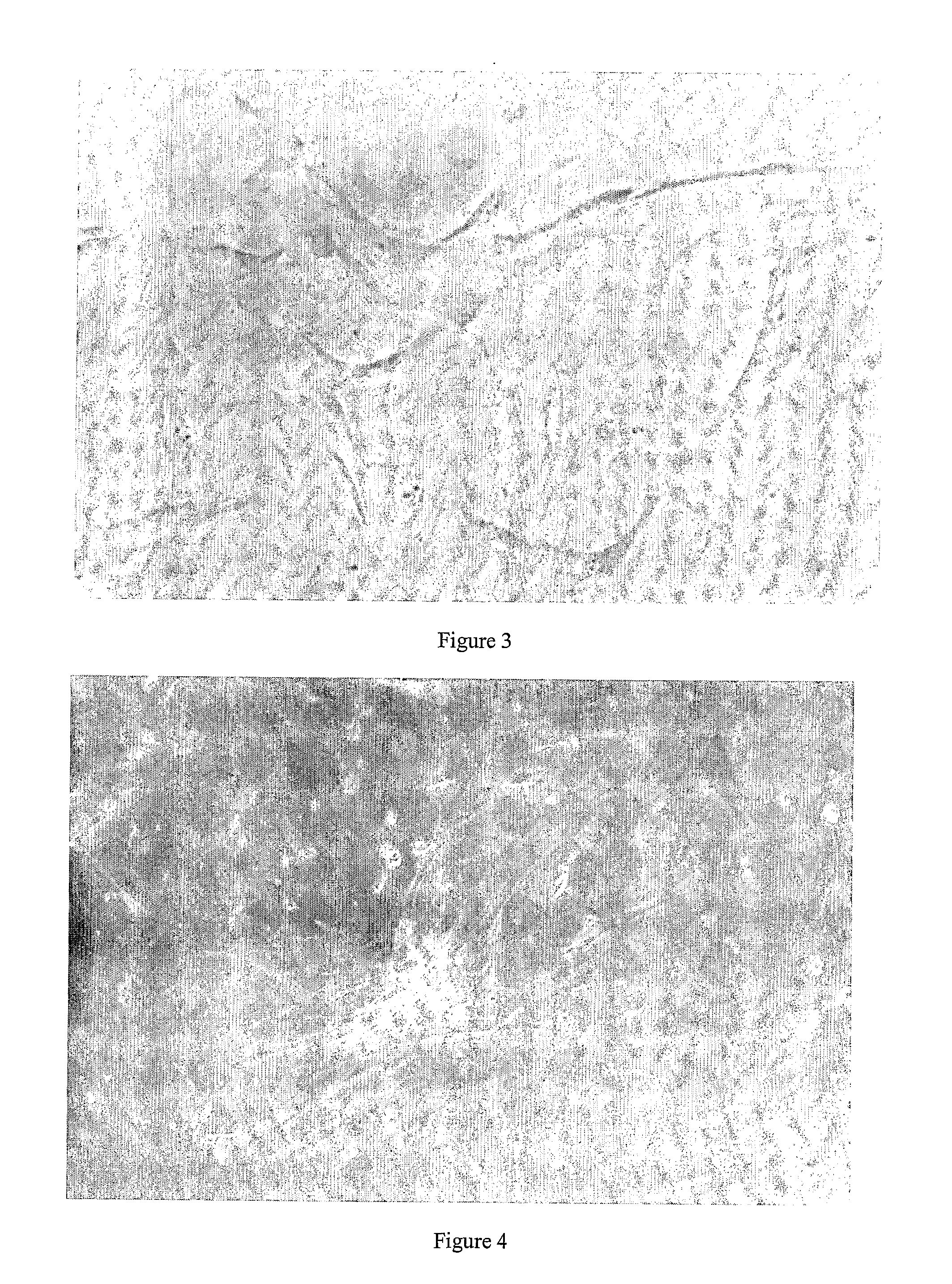Viable cells from frozen umbilical cord tissue
a technology of umbilical cord tissue and viable cells, which is applied in the field can solve the problems that the recovery of viable cells from frozen or cryogenically stored cord tissue is not yet feasible, and can not be achieved
- Summary
- Abstract
- Description
- Claims
- Application Information
AI Technical Summary
Benefits of technology
Problems solved by technology
Method used
Image
Examples
Embodiment Construction
[0049]The invention relates in one aspect to methods useful for storing umbilical cord tissues. This practice enables the future utilization of cells that are histocompatible with their source subject, should that future need arise for instance for medical reasons such as cellular or tissue repair or regeneration.
[0050]In the present invention, umbilical cord tissue is obtained postpartum, and subjected to freezing whereby the frozen umbilical cord tissue is then stored as future source of viable cells. To obtain viable cells from the frozen tissue, the tissue is allowed to thaw and is then extracted to provide cells that, when cultured, exhibit viability.
[0051]The present method can be applied to various cord tissues, such as the vasculature including vessel walls and endothelium, the Wharton's jelly, the amniotic epithelium and the like. The cord from which such tissues are obtained can be cord from any mammal, and is preferably obtained from human umbilical cord. In one embodimen...
PUM
| Property | Measurement | Unit |
|---|---|---|
| doubling time | aaaaa | aaaaa |
| doubling time | aaaaa | aaaaa |
| rapid doubling time | aaaaa | aaaaa |
Abstract
Description
Claims
Application Information
 Login to View More
Login to View More - R&D
- Intellectual Property
- Life Sciences
- Materials
- Tech Scout
- Unparalleled Data Quality
- Higher Quality Content
- 60% Fewer Hallucinations
Browse by: Latest US Patents, China's latest patents, Technical Efficacy Thesaurus, Application Domain, Technology Topic, Popular Technical Reports.
© 2025 PatSnap. All rights reserved.Legal|Privacy policy|Modern Slavery Act Transparency Statement|Sitemap|About US| Contact US: help@patsnap.com



